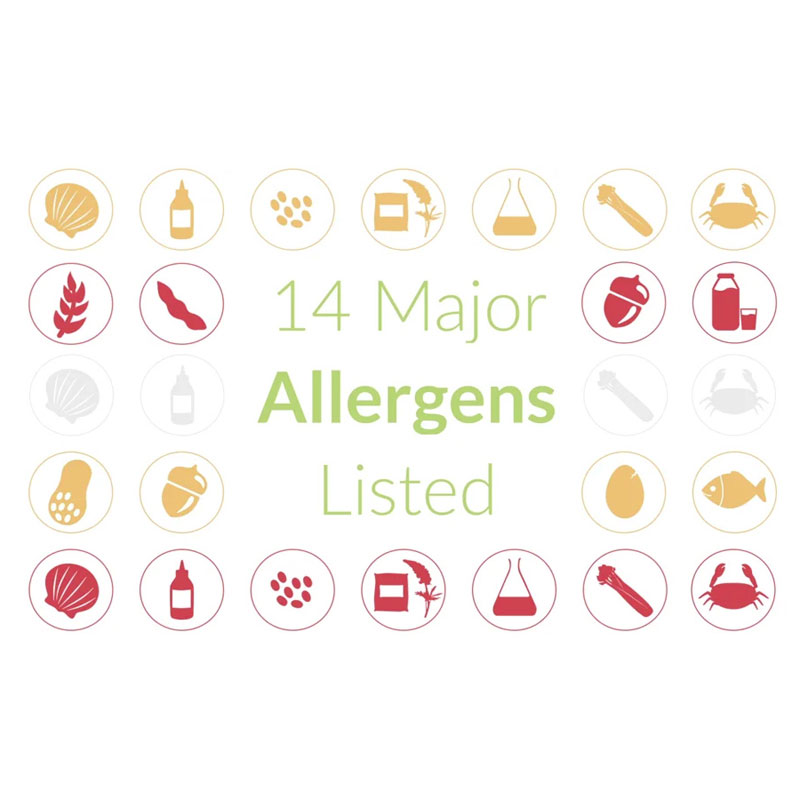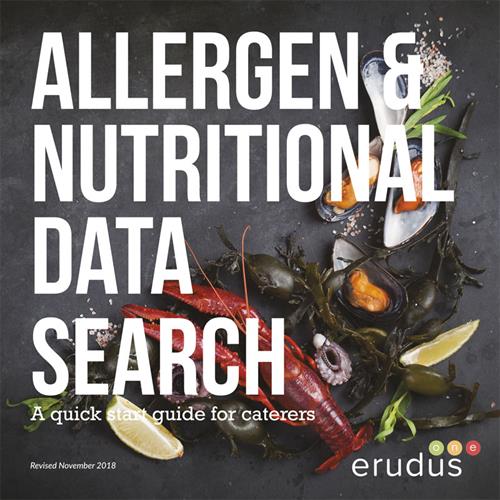Alergenau Bwyd
ARE YOU COMPLIANT?
Our Partnership With The Natasha Allergy Research Foundation
Your wholesaler Harlech Foodservice is a member of The Country Range Group (CRG), a leading foodservice buying group. CRG has entered into a three-year partnership with The Natasha Allergy Research Foundation to help drive the delivery of its charitable objectives such as the Natasha Clinical Trial, becoming the first foodservice buying group to be a partner of The Natasha Allergy Research Foundation.
This unique partnership will see the buying group and its members work alongside the charity to raise compassion, understanding and crucially, vital funds, to help make food allergy history. The Natasha Allergy Research Foundation is the only charity in the UK dedicated to scientific and medical research into allergy.
As well as becoming CRG’s chosen annual charity for the next three years, the partnership will also see The Natasha Allergy Research Foundation become an editorial partner of the industry leading trade magazine, Stir it up providing leading insight about Natasha’s Law, allergen research and other information crucial to caterers.
A quick start guide for caterersDownload Erudus Guide Here In accordance with the Food Information for Consumers Regulation (FIC) you now need to be able to answer any consumer queries regarding allergens for the food that you serve. The Food Standards Agency has produced a handy allergen information leaflet that explains what the new legislation could mean for you and an overview of the 14 allergens which need to be declared when used as ingredients. Take a look at the downloadable resources below or visit the Food Standards Agency website for further advice and resources to help you comply with the regulations. |
Erudus OneNutritional information on over 20,000 foodservice product lines. Click image to view video While the new legislation aims to help consumers and the general public gain a better understanding of the content of the food that they eat; we understand that it is a challenge for businesses throughout the catering and foodservice industry to meet the requirements. Erudus provides caterers with comprehensive nutritional breakdowns, dietary advice and allergen information on over 20,000 products that caterers are purchasing through one data source. Great news for Harlech customers; we are able to offer you this data source completely FREE of charge Email service@harlech.lls.com for more information and get you started. |

|
Here are the 14 allergens that need declaring
Celery
This includes celery stalks, leaves, seeds and the root called celeriac. You can find celery in celery salt, salads, some meat products, soups and stock cubes.
Cereals containing gluten
Wheat (such as spelt and Khoasan wheat / Kamut), rye, barley, and oats is often found in foods containing flour, such as some types of baking powder, batter, breadcrumbs, bread, cakes, couscous, meat products, pasta, pastry, sauces, soups and fried foods which are dusted with flour.
Crustaceans
Crabs, lobster, prawns and scampi are crustaceans. Shrimp paste, often used in Thai and south-east Asian curries or salads, is an ingredient to look our for.
Eggs
Eggs are often found in cakes, some meat products, mayonnaise, mousses, pasta, quiche, sauces and pastries or foods brushed or glazed with egg.
Fish
You will find this in some fish sauces, pizzas, relishes, salad dressings, stock cubes and Worcestershire sauce.
Lupin
Yes, lupin is a flower, bit it's also found in flour! Lupin flour and seeds can be used in some types of bread, pastries and even in pasta.
Milk
Milk is a common ingredient in butter, cheese, cream, milk powders and yoghurt. It can also be found in foods brushed or glazed with milk, and in powdered soups and sauces.
Molluscs
These include mussels, land snails, squid and whelks, but can also be commonly found in oyster sauce or as an ingredient in fish stews.
Mustard
Liquid mustard, mustard powder and mustard seeds fall into this category. This ingredient can also be found in breads, curries, marinades, meat products, salad dressings, sauces and soups.
Nuts
Not to be mistaken with peanuts ( which are actually legume and grow underground), this ingredient refers to nuts which grow on trees, like cashew nuts, almonds and hazelnuts. You can find nuts in breads, biscuits, crackers, desserts, nut powders (often used in Asian curries), stir-fried dishes, ice cream, marzipan (almond paste), nut oils and sauces.
Peanuts
Peanuts are actually a legume and grow underground, which is why it's sometimes called a groundnut. Peanuts are often used as an ingredient in biscuits, cakes, curries, desserts, sauces (such as satay sauce), as well as in groundnut oil and peanut flour.
Sesame Seeds
These seeds can often be found in bread ( sprinkled on hamburger buns for example), bread sticks, houmous, sesame oil and tahini. They are sometimes toasted and used in salads.
Soya
Often found in bean curd, edamame beans, miso paste, textured soya protein, soya flour or tofu. Soya is a staple ingredient in oriental food. It can also be found in desserts, ice cream, meat products, sauces and vegetarian products.
Sulphur Dioxide
This is an ingredient often used in dried fruit such as raisins, dried apricots and prunes. You might also find it in meat products, soft drinks, vegetables as well as in wine and beer. If you have asthma, you have a higher risk of developing a reaction to sulphur dioxide.



